The community of Alsemberg, linked to the Saint-Victor Institute, counts two Brothers.
The beginning of the 21st century
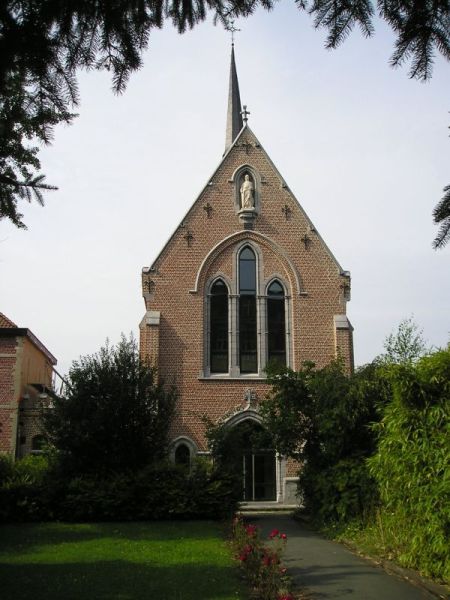
The youngest brother is almost eighty and the oldest is 83. Everyone is relatively healthy. None of them are still in front of the class or have a management position in the school.
However, one brother is a member of the Management Board of the Sint-Victorinstituut in Alsemberg and of the Sint-Niklaasinstituut in Anderlecht. One brother is also a member of the Provincial Council.
The convent space
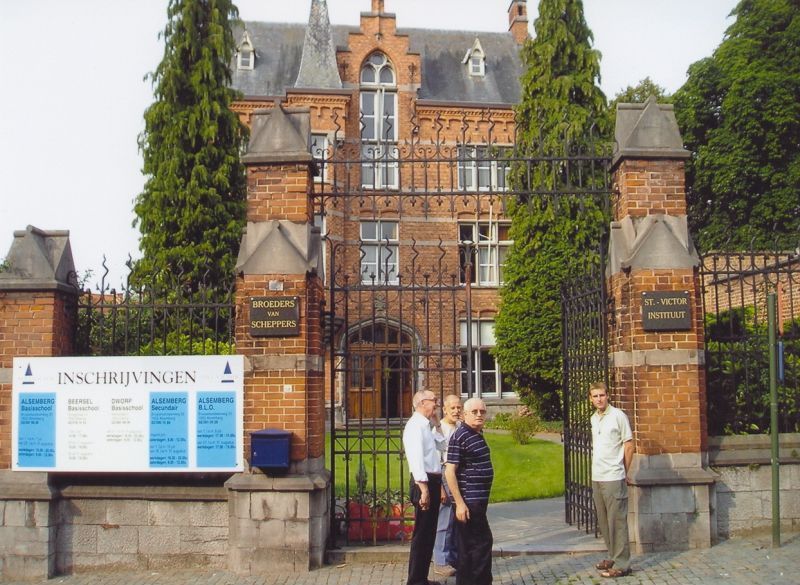
The Brother community now lives on the place where in 1861 the first home was built in which the first five Brothers started the Saint-Victor institute. That house was broken off in 1897 and was replaced by a monumental entrance building in Neo-Flemish Renaissance – style with a front garden and a monumental entrance fence.
Till 1985 that was the official entrance of the Institute. But during that year the Brothers made renovations in that building so as to arrange a real convent space.
Retired but still active
A brother serves in the parish church during resurrection celebrations and replaces church guards who are prevented.
Two Brothers are active on the internet; among other things, they’re managers of the international Schepperswebsite and of an own site with self drafted educational software for the primary school.
The convent as a community
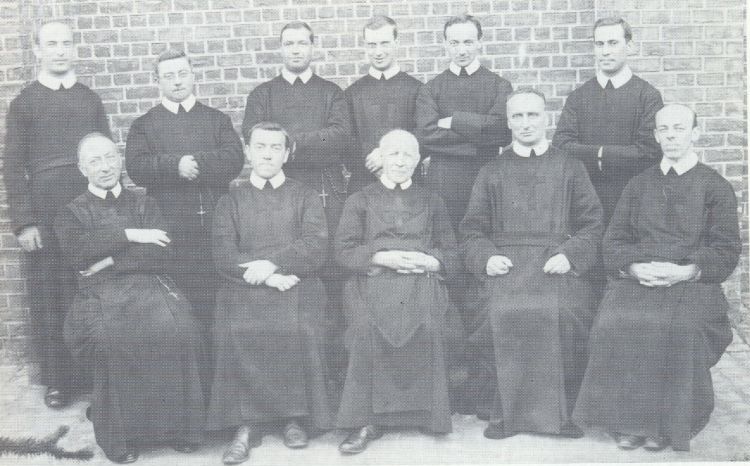
Brothers are religious men who form a convent community. In the morning, at noon and in the evening, they collect in the chapel to pray and to celebrate. Then they go the dining room and eat together.
They also watch TV together (but this is not obliged) on two TV-sets. A lot of newspapers and magazines and a library with religious literature are available in the reading room.
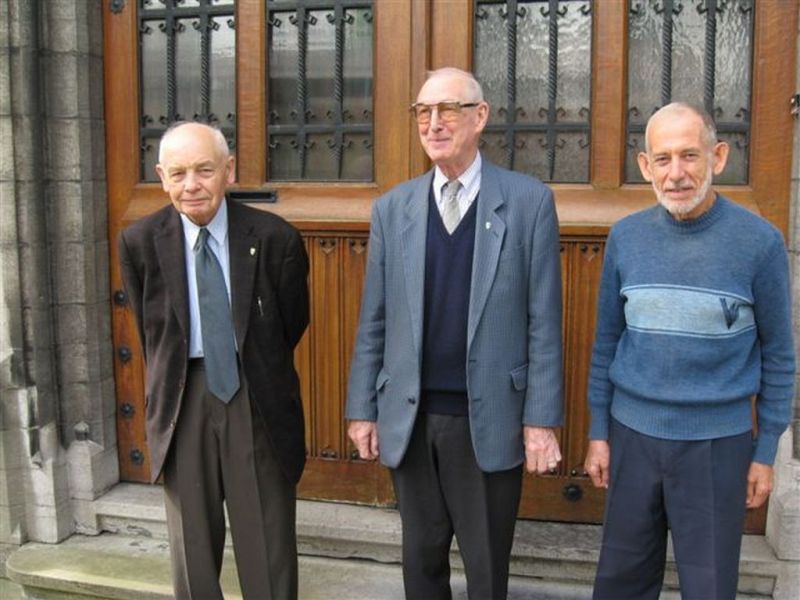
The Brothers are conscious of the fact that they are mortal, but they believe in eternal life after death. At the cemetery of Alsemberg, there are already 28 names written on the common grave tomb. The first died in 1912; the last in 2021.
In 2008 three of the six Brothers of the Saint-Victor Institute celebrated their jubilee. Brother Martinus Bex celebrated his 65 years of monastic jubilee. For Brother Remy Rosiers it was his 60th jubilee and for Brother Arnold Van Noten it was his 50th monastic jubilee.
And so it all began in 1861
The next paragraph with exception of the subtitles and a few small text adaptations or omissions- are borrowed from “Als een ceder van de Libanon” by Steven de Broey.

On August the 27th of the year 1861 five Brothers from Scheppers out of Mechelen arrived in Alsemberg. People of this modest place of pilgrimage were a bit astonished.
Amidst mocking glances of a few curious spectators, they moved to a dilapidated house - the former inn “At the three Kings” – at the foot of the sanctuary where a miraculous statue, donated by H. Elisabeth of Hungary, is honoured.
In that house they would teach, educate and they would try to remove the weeds from the hearts of the children they would be trusted. While waiting for the removal truck that carried their furniture, they already started weeding the weeds that covered the garden of their new staying.
At last, when it already became dark, the removal truck arrived. At the entrance of the village, the truck driver although couldn’t brake enough so that the horses deviated in the curb of the road and with the truck as a propelling mass behind them, they landed in the surrounding bushes. A lot of people came looking by but nobody helped…
The first failure
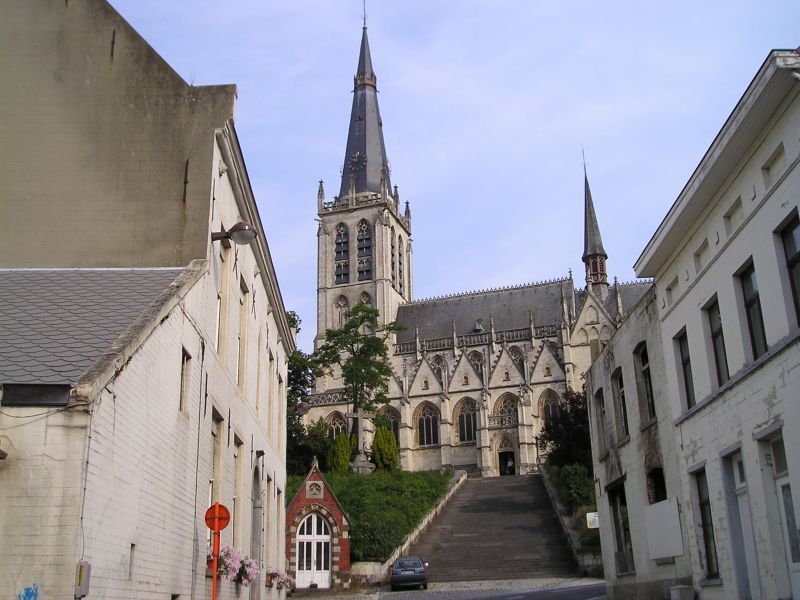
Brother Vincent who installed the Group didn’t understand why they weren’t welcome. A few years ago, when the owner of the inn “The three Kings” left , and tried his luck in another place, a certain Sir Jacobs who was a Reverend in a Brussels parish, had already tried to start a boarding school.
A pilgrimage place in a healthy region, close to the main town, must have serious possibilities, he’d thought. He failed. There were too less candidates and there was even lesser discipline. So, Sir Reverend Jacobs had to send his boarders home and also left in silence.
A second failure
Where in earlier times beer was drawn, a bookseller tried to sell literature, but this concern was also unsuccessful.
Then a second priest arrived, Sir Reverend van Stalle with the same intention as his predecessor. He renovated the former inn and enlarged the building. But, a lot of difficulties surpassed his endurance and soon he had to forget his idealistic plans.
The third failure
Sir Reverend Luytgaerens was the third to follow. He would use stronger means to reach his purpose. He collected a few young men and gave them a habit; he called them monks, and promoted them to teachers, although they had no education therefore.
But those monks didn’t behave like they used to do. By order of his Excellency the Cardinal the prior had to disband his non-recognized congregation. Teachers and pupils returned to their families.
The fourth failure
At last, a layman would try what three priests couldn’t have realized. In 1860, a certain Sir Wuyts, former manager of a day school, started with a lot of courage and maintained it with a maximum of 17 pupils.
Little sympathy
In the village they had followed this sequence of failures with little sympathy. And then the Brothers of our Holy Mary of Mercy arrived, whom they had never heard of.
Probably also a kind of adventurers just like the followers of Sir Reverend Luytgaerens. Their carrying chauffeur couldn’t have kept the road and they would certainly derail themselves. In such a case all help was wasted.
That’s the way people of Alsemberg thought and Brother Vincent had to use all his persuasion to convince a farmer of putting his horse to the blocked car so as to bring the furniture at its destination.
Hard to put to it
For the other Brothers this kind of unfriendly reception was hard to put to it. They unloaded their possessions – it took till about midnight – and then they lied down somewhere on the floor to rest.
The next days they had to scour and to scrub a lot! With the dirt out of the cellars they filled a lot of buckets. Brother Vincent had to encourage his fellow Brothers a lot and he himself already started the first renovation works.
Therefore he needed the help of professionals, but these were difficult in persuading. The suppliers as well were extremely distrustful. They all had a bad memory of the former Brothers and Sir Reverend Luytgaerens had forgotten to pay his debts.
Opening of the Saint- Victor Institute

Brother Vincent had been the strongest. After a lot of discussions he had been able to prove his solvability and so he could find the necessary helping hands.
All the Brothers did their utter best. The faith and the courage of the assistant friar worked catching. The task advanced as they wished and on the first of October their boarding school – the Saint-Victor Institute could be opened.
Five pupils had announced themselves of which three of them sooner had already showed their goodwill. Afterwards two old pupils presented themselves. Thus, a kernel of seven to start with and this with five capable teachers!
A Visit of Mgr. Scheppers
A couple of days after the opening Mgr. Scheppers visited the new school. He had read the mass of the Holy Spirit in the parish church and he had also given a warm welcome speech.
That day there was already a small feast with songs, diction and games. It was a pretty family atmosphere. The Brothers took care of the discipline without too much severity. Among the boys, they stimulated a spirit of study ardour, order, obedience, respect for the authority and a good understanding.
Their own attitude stimulated the pupils and as their way of living was followed very critically as well by the locals as by the clergy of Alsemberg and also by the surrounding communities, they soon got a good reputation.
Mgr. Scheppers was reassured in the result of this venture. At the urgent request of Cardinal Sterckx he started this business and that request was already a guarantee itself. During his trip to Rome, the number of pupils in Alsemberg had already risen to 20. Everything points to it that they will reach a success!





